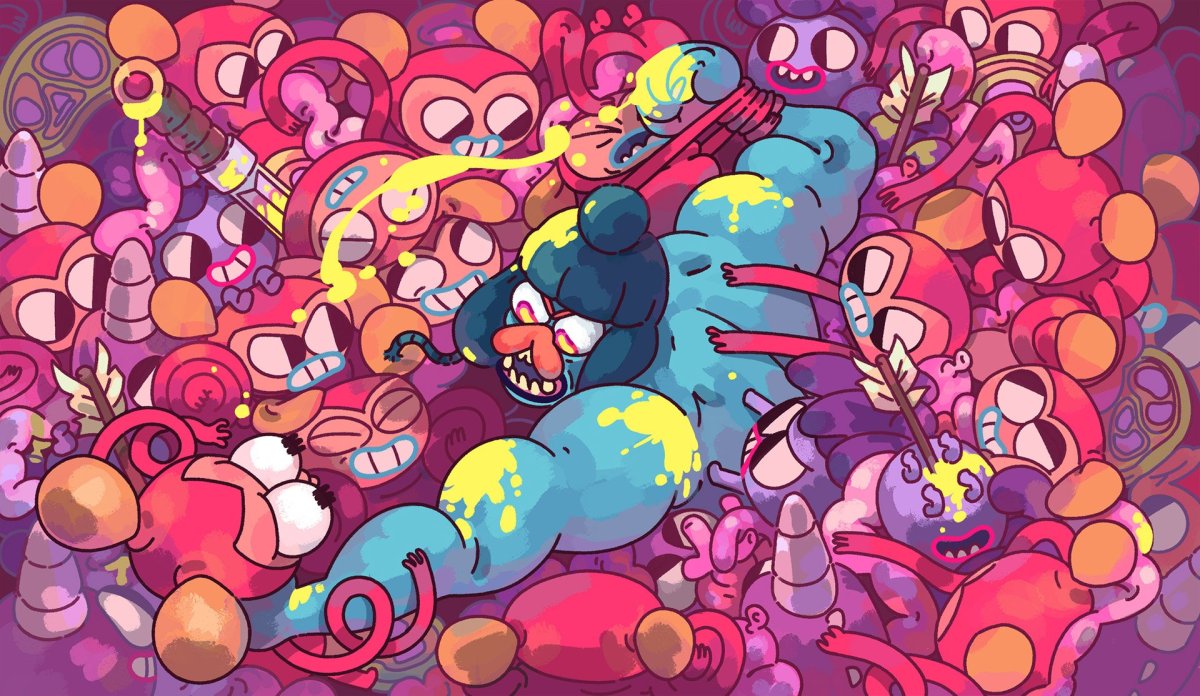Your next obsession
When a puzzle game’s central mechanic is seared in your mind to the extent that it vividly flashes before you every time you close your eyes, you know you’ve overdone it. That’s precisely where I’m at right now with Capybara’s new puzzler Grindstone, out this month as one of Apple Arcade’s debut titles.
Games like Critter Crunch and even Might & Magic: Clash of Heroes feel like a short lifetime ago, but they still come up when folks aren’t fixating on Sword & Sworcery, Super Time Force, and Below.
I fear that Grindstone might be overshadowed – both in the short-term, as players try to sift through Apple Arcade during its first month, and long-term, as Capy focuses its attention elsewhere – but let this gorgeous game serve as a firm reminder: these puzzle-makers can absolutely still bring it.

Grindstone (iOS)
Developer: Capybara Games
Publisher: Capybara games
Released: September 19, 2019
MSRP: Part of Apple Arcade ($4.99 a month)
It only took a single tutorialized level for me to be sold on Grindstone. I’m that into the core concept. Basically, it’s a mishmash of colored gem matching and turn-based tactics, and it’s executed brilliantly.
Playing as Jorj, an adventuring dad who’s definitely seen better days, you’ll try to ascend Grindstone Mountain floor by floor, level by level, turn by turn. My initial read on the game had me thinking I was in for a punishing roguelike (since you need to top up your health between rounds and occasionally grind for gear-repairing resources), but it isn’t one. Grindstone can be super tricky, but it’s not a roguelike.
Each turn, you’ll trace a path between a group of red, yellow, blue, green, or purple monsters in hopes of making the largest chain possible – while also ending your attack in a safe spot and, ideally, setting yourself up for future success. It’s that simple! (Except, in many cases, it totally isn’t.) Like all the best brain-busters, you have to constantly consider micro and macro factors. You can’t get tunnel vision.
Jorj can move in eight directions (in other words, diagonals are fair game), and if he takes down at least ten creeps in a single strike, a gem will land on the map that can be used to string together an attack on different-colored monsters – for instance: a yellow group first, then green (or whatever else is in reach).
That basic premise – generating enough momentum to clear the board when the time is right – factors into larger foes, who have HP and roam around. The longer your combo, the more damage you’ll dish when you bump into a Big Guy. The principle also goes for breakable obstacles, trap-door-opening levers, skeleton-raising tombstones, bosses, and so much more. One of my favorite parts of Grindstone is seeing an enemy for the first time, working out its quirks, and using them to my advantage.
Most levels require you to kill a certain number of creeps – or in some cases the smarter, non-color-coded creatures – to open the exit door. Here’s the trick, though: even the simplest foes can be deadly if you ignore them for too long. Every turn, more and more puny monsters will become enraged, a signal that if you end a turn sitting beside them, you’ll take a hit. By default, Jorj only has three hearts.
When he bites the dust, you’ll lose all of your items and progress in a level. Failure stings when you’re deep into earning an optional objective (say, unlocking a treasure chest), or clearing a bonus challenge (“kill three bats in one chain”), or simply trying to depart from a long battle after a job well done. It isn’t necessarily enough to win – you have to get out alive. There’s a sense of mounting urgency.

In general, Capybara does a good job of introducing wrinkles on a regular basis, whether it’s environmental hazards, unique monster behaviors, or new pieces of gear. You can hold three items, some of which are “refueled” whenever you enter a level, and some of which need to be manually maintained in town using various forms of currency earned in battle. Unsurprisingly, the more advanced stuff – like poisonous arrows, or an ability that lets you hop onto any tile – tends to require repairs.
That big-picture aspect of Grindstone feels a touch unrefined. Once I got into the swing of things, I never really needed to consciously grind, but even then, stocking up on item energy and health between levels felt like a slight chore. I could see some of these out-of-level elements needing to exist in a free-to-play game, but they aren’t justified well enough here. Do I like the underlying idea of customization? Sure! Did I get by just fine using the same build for most of Grindstone‘s 150 levels? You better believe it.
On that note, there’s the matter of the game’s length. I don’t say this very often, but here goes: it’s too long. Capy could consolidate 20 percent of Grindstone and the game would be better off for it. That 20 percent is still fun, to be clear, but when a great game feels padded in any way, it’s extra noticeable.
Even with those quibbles, I adore this game. Grindstone‘s tactical color-matching conceit is one of the most satisfying puzzle game mechanics in recent memory. I’m hopelessly hooked, and I regret nothing.
[This review is based on a retail build of the game through an Apple Arcade subscription purchased by the reviewer.]













Published: Sep 25, 2019 02:00 pm